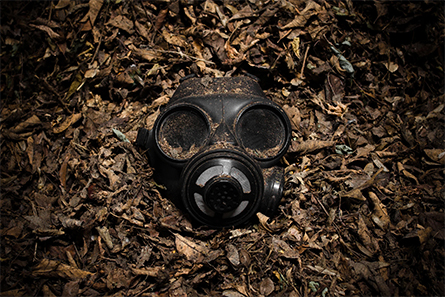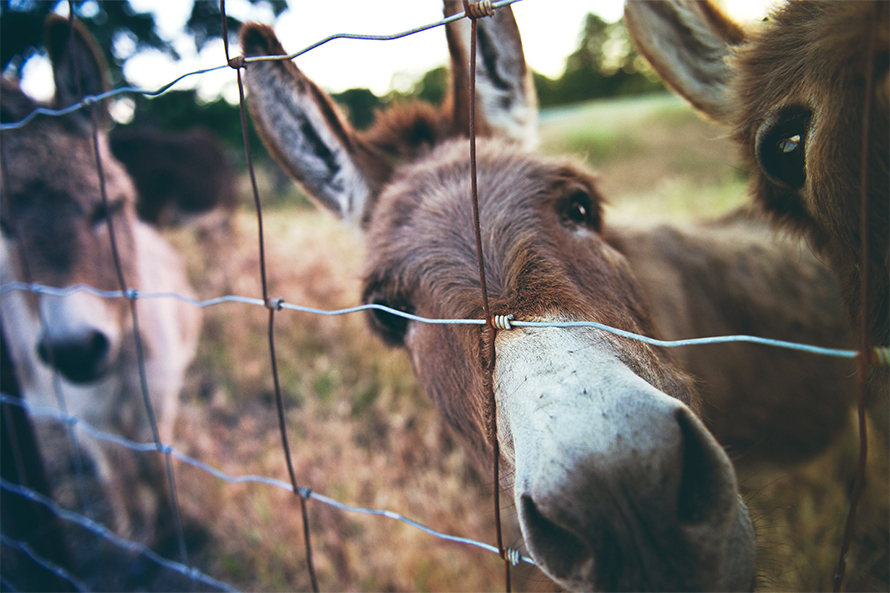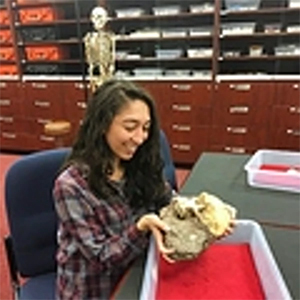A decoy may be the key to developing a vaccine against a deadly bioweapon
Though the international Biological and Toxin Weapons Convention prohibited biological warfare and the development of bioweapons in 1975, the knowledge gained from previous research and testing didn't just disappear. This, combined with a lack of means to enforce the agreement and subsequent flagrant violations, has prompted some nations to attempt to develop vaccines against known bioweapons as a precaution.

One such bioweapon is Venezuelan equine encephalitis virus (VEEV), which is naturally found as far north as Florida and south through Mexico, Central America, and South America. It is transmitted to humans through mosquitos or through aerosols from infected horses and donkeys. VEEV targets the nervous system, and can be fatal if it enters the brain. Though VEEV is not usually deadly in humans, it causes symptoms in nearly 100 percent of those infected, including fever, severe headache, vomiting, and diarrhea, and may cause neurological complications.
VEEV was developed as a biological weapon by the United States and Soviet Union during the Cold War. It was manufactured as an incapacitating agent, designed to cause severe symptoms that would not only weaken the opposing military, but also require valuable resources to contain and treat.
Though it has never actually been used in warfare, VEEV has many characteristics that make it a powerful potential bioweapon. Its symptoms resemble other viruses like dengue and it requires specialized tests to diagnose. It is relatively easy to produce and store, and there are multiple dangerous strains. To make matters worse, it's also extremely infectious — at least 20 staff became ill when in 1959 a small vial was dropped in a laboratory stairwell in the former Soviet Union.
Most VEEV strains are under highly restricted access in the United States, and there is no vaccine available for the public; a live-virus vaccine does exist for the military and at-risk laboratory personnel. However, this vaccine often causes adverse side effects, requires multiple booster shots, and may even be able to revert back to its infectious form once inside the body.
In a recent study published in Nature, scientists used CRISPR gene editing technology to determine how VEEV enters cells. Because they could not access the most dangerous strains of VEEV, they created a hybrid virus using genes from a milder VEEV strain and a related virus. This hybrid infected cells in the same way as the most dangerous VEEV strains while being safe to handle.
They then deleted genes from mice brain cells and exposed the cells to the modified version of VEEV. They found that when a little-studied gene called Ldlrad3 was removed, the virus could not enter these cells. Conversely, when Ldlrad3 was added to different types of cells that are usually naturally resistant to VEEV infection, VEEV was able to enter. Notably, when study co-author William Klimstra repeated these tests using human cells and a dangerous, restricted strain of VEEV, they observed the same results.
Ldlrad3 codes for a protein that's found on the surface of neurons, and the researchers believe it to be the main "handle" that the virus uses to attach to the cell (in the same way that ACE2 is the entry point of SARS-CoV-2 into cells). However, since this gene is naturally present in our bodies, it can't just be deleted to prevent infection.

To circumvent this issue, these researchers created a "decoy" protein and injected it into living mice in an effort to trick the virus. The idea is that a VEEV virus attaches to a decoy, which blocks it from latching on to the protein LDLRAD3 (made by the gene Ldlrad3), much like how having your hands full keeps you from picking up something new. This would mean that VEEV viruses would be unable to enter the cells, preventing infection. For this experiment, the team was able to access one of the restricted VEEV strains.
The mice were injected with the decoy protein six hours before and 24 hours after exposure to VEEV. All of the mice who were infected with VEEV without the decoy protein died, while all of those who received the decoy survived. Even when VEEV was injected directly into their brains, eight of the ten mice who received the decoy survived.
While the decoy hasn't yet been tested in humans or other susceptible animals, researchers hope that it could be developed into a vaccine to be used during outbreaks.
Outbreaks are particularly devastating in regions that rely on equines (horses, donkeys, and mules) for agriculture and transportation. Not only do equines commonly spread the disease to humans, but they are also much more likely to die from the virus. Though some equine VEEV vaccines have been used in the past, they unknowingly contained the activated, infectious virus and are thought to have actually caused most, if not all, outbreaks prior to 1970. A new and improved vaccine that could be given to both farm animals and humans could slow the spread of the virus, minimizing the health and economic impacts of outbreaks.
These same regions are also home to the mosquito vectors of VEEV. These mosquitos prefer warm, wet habitats, and more recent outbreaks have been recorded after particularly heavy rains and floods. As global warming accelerates, VEEV-carrying mosquitos may expand further north into North America, putting even more people at risk of contracting this pathogen even in the absence of an act of war.
VEEV is just one of many potentially lethal bioweapons without a satisfactory vaccine. The vaccine for anthrax must be administered in five separate doses over the course of 18 months, with booster shots needed each year. Vaccines for botulism, caused by one of the deadliest known toxins, also exist, but their actual effectiveness is unknown and none are FDA-approved.
Though more testing is needed to evaluate the decoy protein's potential as a new vaccine for VEEV, its preliminary success may pave the way for improved vaccines for other bioweapons in the future.
And while VEEV is (hopefully) not an imminent security threat to the United States, we may sleep a little easier knowing that a vaccine is in the works to prevent another pandemic.
![]()
Enjoy reading ASBMB Today?
Become a member to receive the print edition four times a year and the digital edition monthly.
Learn moreGet the latest from ASBMB Today
Enter your email address, and we’ll send you a weekly email with recent articles, interviews and more.
Latest in Science
Science highlights or most popular articles

Exploring the link between lipids and longevity
Meng Wang will present her work on metabolism and aging at the ASBMB Annual Meeting, March 7-10, just outside of Washington, D.C.

Defining a ‘crucial gatekeeper’ of lipid metabolism
George Carman receives the Herbert Tabor Research Award at the ASBMB Annual Meeting, March 7–10, just outside of Washington, D.C.

The science of staying strong
Muscles power every movement, but they also tell the story of aging itself. Scientists are uncovering how strength fades, why some species resist it and what lifestyle and molecular clues could help preserve muscle health for life.

Bacteriophage protein could make queso fresco safer
Researchers characterized the structure and function of PlyP100, a bacteriophage protein that shows promise as a food-safe antimicrobial for preventing Listeria monocytogenes growth in fresh cheeses.

Building the blueprint to block HIV
Wesley Sundquist will present his work on the HIV capsid and revolutionary drug, Lenacapavir, at the ASBMB Annual Meeting, March 7–10, in Maryland.

Gut microbes hijack cancer pathway in high-fat diets
Researchers at the Feinstein Institutes for Medical Research found that a high-fat diet increases ammonia-producing bacteria in the gut microbiome of mice, which in turn disrupts TGF-β signaling and promotes colorectal cancer.

